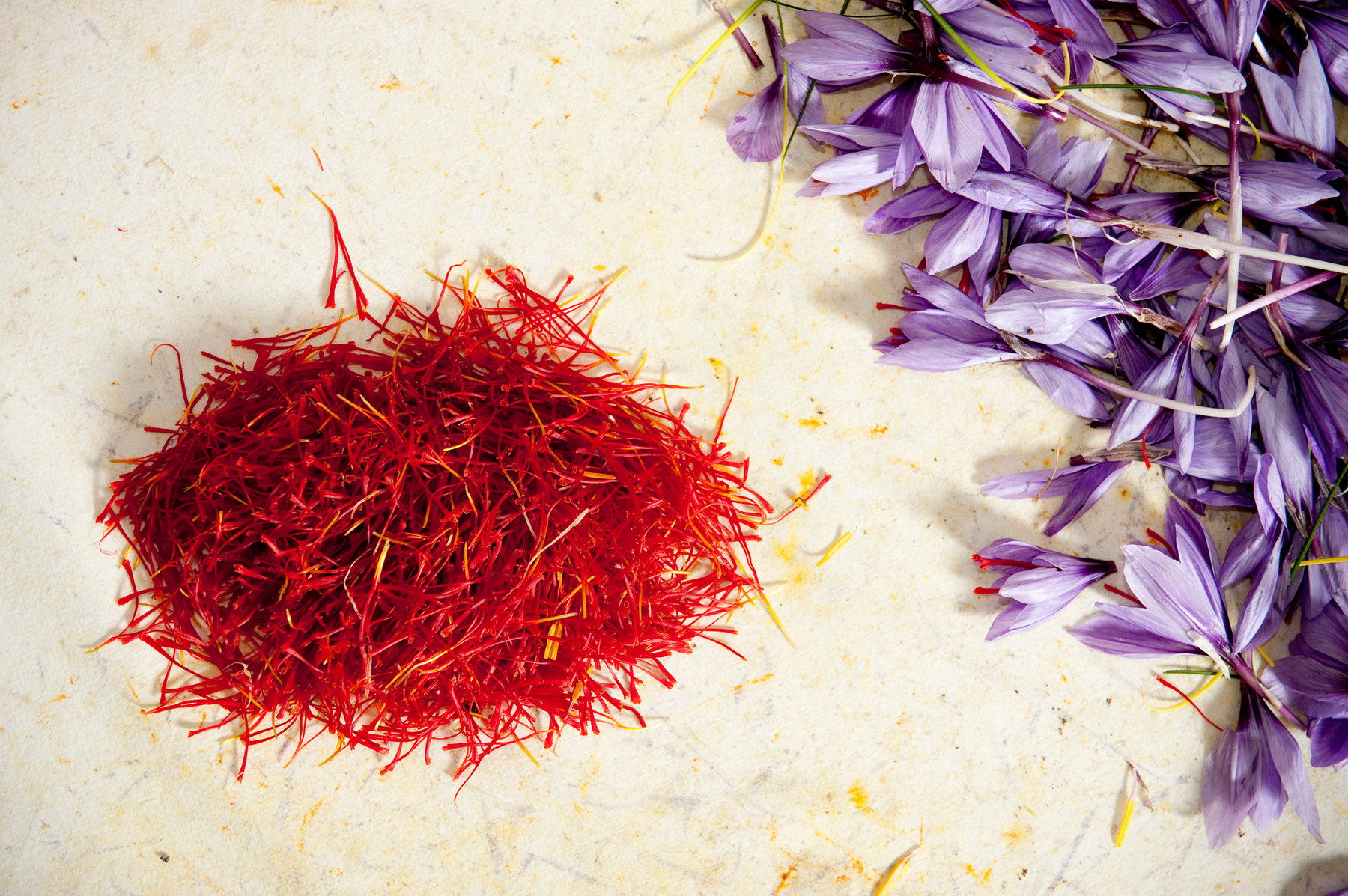The per hectare production of saffron in J&K has increased manifold, bringing cheers among the saffron growers who had been constantly seeing decline of the crop which is famous across the world.
Saffron growers are happier and this is for the first time in the last eight years that saffron production in Kashmir has increased.
It is a spice that comes from the stigmas of the purple flowers of the plant Crocus sativus.
Each flower contains three stigmas that are handpicked and then dried to make the saffron spice.
It takes thousands of flowers to produce a few grams of saffron.
The stigmas are typically of an orange-red colour, which is due to the content of crocetin, a type of acid and crocin.
Pampore meadows attract tourists from everywhere to witness the yellow, maroon, and purple hues of the blossoms that bloom beside giant Chinar trees and harvest time resembles a festival for the villages in the area.
On the first day of the harvest, saffron farmers head to the shrine of Hazrat Sheikh Sharifuddin in Namblabal Pampore to offer some saffron.
According to growers and officials, the National Saffron Mission, which was launched in 2010 played a pivotal role in the substantial increase in the saffron production and officials are hopeful that the coming years would bring more good news for the saffron growers.
In fact, if saffron farmers in Kashmir smile, that means over 16,000 families are happy.
According to the 2011 census, approximately 16,000 families, including 11,000 women, in Kashmir are associated with saffron cultivation.
In 2020, Kashmir set a record when saffron production crossed 13 metric tonnes in 10 years.
Though the J&K’s Agriculture Department is yet to calculate the exact numbers, this year, production is expected to break that record.
Saffron is one of the world’s most expensive spices and is known as the king of condiments.
It fetches between Rs 1.5 lakh and Rs 2.5 lakh per kg.
“The corm production is good and the plants are getting better. The stigma of the flower is bigger. The overall crop is better. Last year, I harvested 100 tola (1 kg) of saffron and this year it is expected to cross 1.5 kg,” says a young farmer whose family owns around 35 kanal of saffron fields in the district.
Director Agriculture Kashmir Choudhary Mohammad Iqbal told Greater Kashmir that this year the department was expecting a jump in production.
Saffron output in Kashmir, which mostly is cultivated in Pampore in south Kashmir’s Pulwama district near the Srinagar-Jammu National Highway crossed 13.36 tonnes in 2020, the most in a decade, which, to a large extent, is attributed to the introduction of a government scheme – National Saffron Mission – to rejuvenate the cultivation of the spice.
The mission brought scientific know-how, underground irrigation, and a spice park to rejuvenate the production and post-production processes.
“Last season we had a bumper crop due to which growers earned good money and this year we expect good production and stability in the markets,” Iqbal said.
Recently, the J&K government acknowledged that the production of saffron per hectare had gone up during the last harvest.
A government spokesman said that from 1.88 kg production per hectare, the production now had reached more than 4.5 kg per hectare and officials were hopeful that it would go further up in the coming years.
Saffron growers said that the results of the National Saffron Mission were showing now.
The government said that the annual yield of saffron in Kashmir crossed 13 metric tonnes in 2020 for the first time in 10 years and increased with each passing year. The production was quite encouraging during the last harvesting season year due to favourable temperature and initiatives undertaken by the government.
Kashmiri saffron was given a Geographical Indication (GI) tag by the geographical indications registry.
The request was filed by the Directorate of Agriculture, J&K government, and facilitated by the Sher-e-Kashmir University of Agriculture Sciences and Technology, Kashmir (SKUAST-K) and Saffron Research Station, Dussu (Pampore) with the aim to make it illegal for someone outside Kashmir to make and sell a similar product under the “Kashmiri saffron” name.

